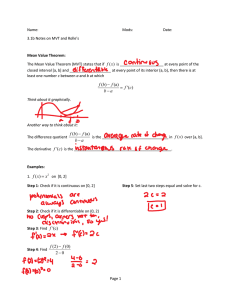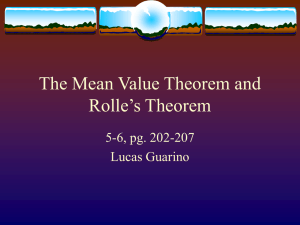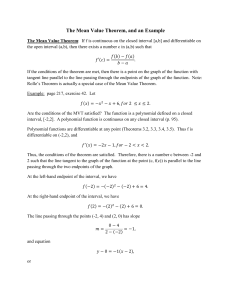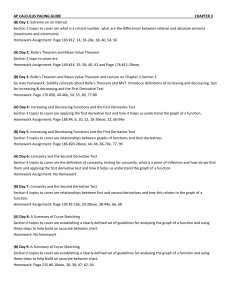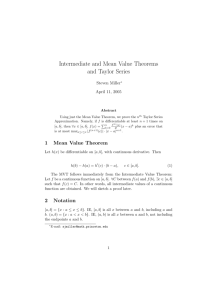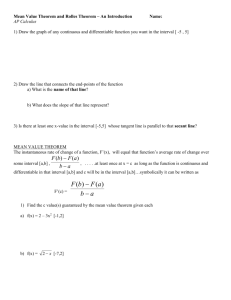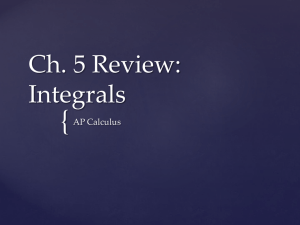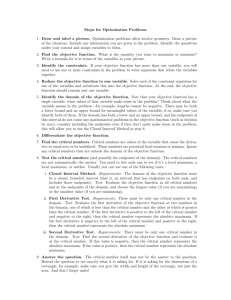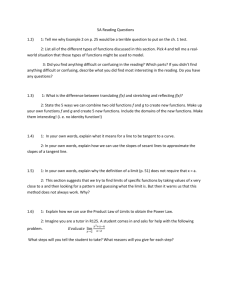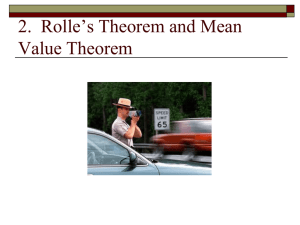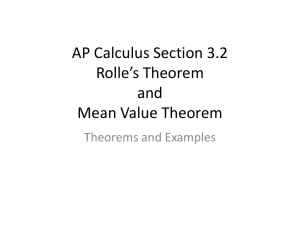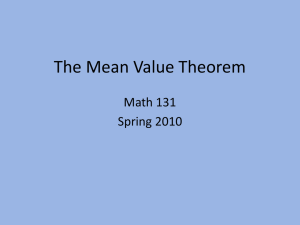Mean Value Theorem Chapter 4(2)
advertisement
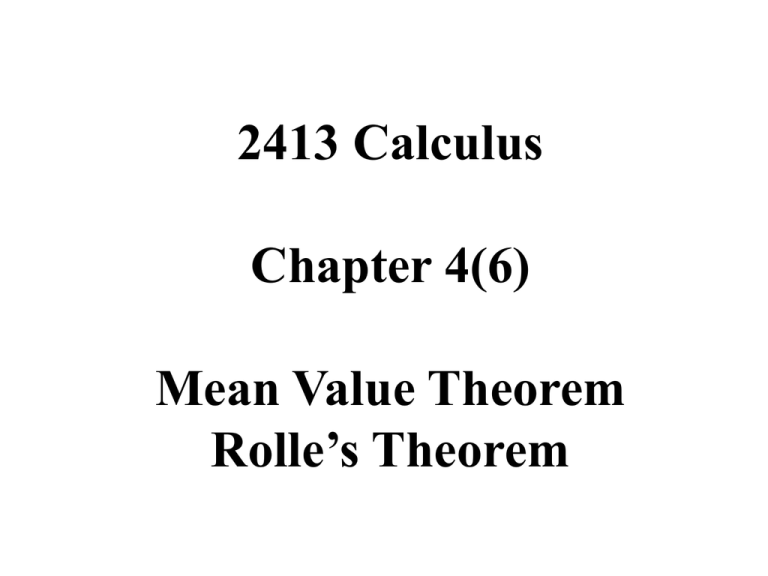
2413 Calculus Chapter 4(6) Mean Value Theorem Rolle’s Theorem Mean Value Theorem If you have a continuous function (solid) on an interval with a derivative (no sharp points) then someplace on the interval the tangent line is parallel to the line through the ends. 1) Show f(x) is continuous on [a, b] 2) Show f(x) has a derivative on [a, b] 3) Set f (c) f (b) f (a) (slope between endpoints) ba If f(x) is a continuous function at every point of the closed interval [a,b] and it has a derivative at every point in (a,b), then there is some point c in (a, b) were: f (c) f (b) f (a) ba Continuous on [a,b] ? Derivative on (a,b) ? c has slope of ab a c b Physical interpretations of the MVT f (c ) f (b ) f ( a ) ba is the change at an instant (when x = c) is the change between the endpoints, or the average change over the interval If you start at 0 ft and take 6 seconds to go 300 feet your average velocity (average speed) is 50 ft/sec. From the MVT there must be some time where your velocity is exactly 50 ft/sec. Physical Interpretations II Assume you start in Houston at noon and arrive in Dallas (240 miles north) at 3:30. The MVT says you 68.571 mph at some time during the were going _____________ trip. 240 0 f (c) 68 .571 3. 5 0 Example 3: Determine if the MVT applies and find c f ( x) x 7 x 4 on [1,3] 2 Continuous because: Polynomials are continuous Find c: Differentiable because: Polynomials always have derivatives f (b) f (a) f (c) ba 26 4 2c 7 3 1 2c 7 11 c2 for (1,4) and (3,26) Example 4: Determine if the MVT applies and find c 1 f ( x) on [1,3] x2 Continuous because: The vert. Asymp. Is outside the interval [-1,3] Differentiable because: Derivative exists inside (-1,3) f (b) f (a) Show : f (c) for (1, 1) and (3, 51 ) ba 1 1 5 1 2 c2 5 (c 2) 3 1 1 1 c 2 5 2 (c 2) 5 Rolle’s Theorem If you have a continuous (solid) function on an interval with a derivative (no sharp points) and the endpoints are the same height, then someplace on the interval the tangent line has a slope of zero 1) Show f(x) is continuous on [a, b] 2) Show f(x) has a derivative on [a, b] 3) Verify the f(a) = f(b) 4) Set f (c) 0 (horizontal tangent, slope is zero) Example 5: Determine if Rolle’s Theorem applies and find c x2 1 f ( x) x on [1, 1] Not Continuous because: Undefined at x = 0 Rolle’s Theorem Does Not Apply Example 6: Determine if Rolle’s Theorem applies and find c f ( x) x 2ln x Continuous because: Ln is defined for x > 0 f (1) 1 and f (3) 3 2ln 3 on [1,3] Differentiable because: Has a derivative if x ≠ 0 Endpoints are NOT the same Rolle’s Theorem Does Not Apply Example 7: Determine if Rolle’s Theorem applies and find c f ( x) x x 3 on [0, 1] Differentiable because: Has a derivative if x ≠ 0 Continuous because: Cube-roots are continuous f (0) 0 and f (1) 0 Show: f (c) 0 f '( x) 1 1 1 3 3 c2 1 3 3 x2 Endpoints are the same on [0, 1] =0 c 2 13 1 c 27 3
